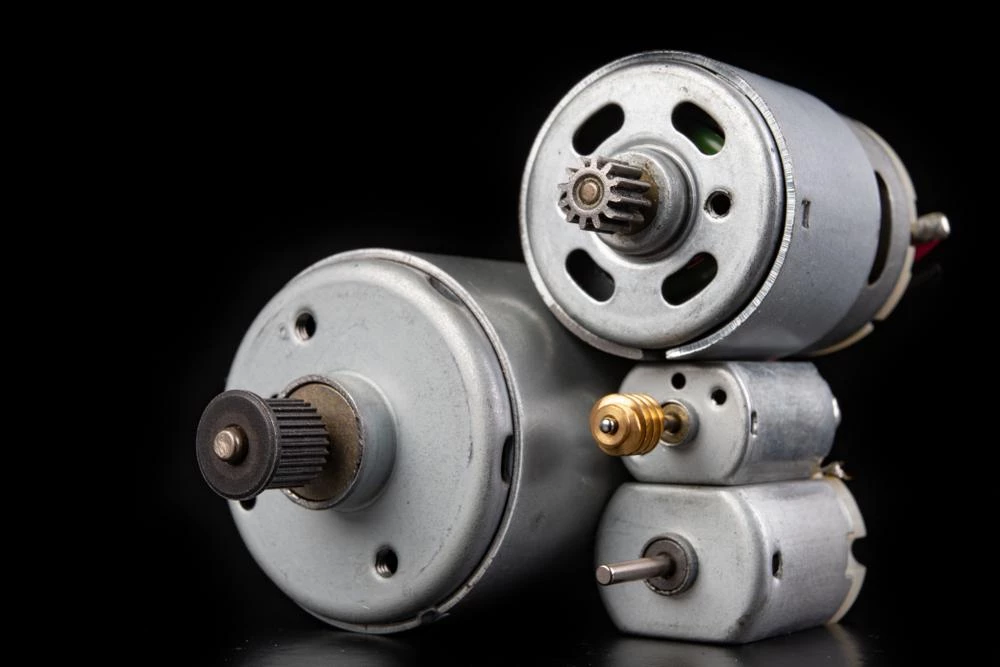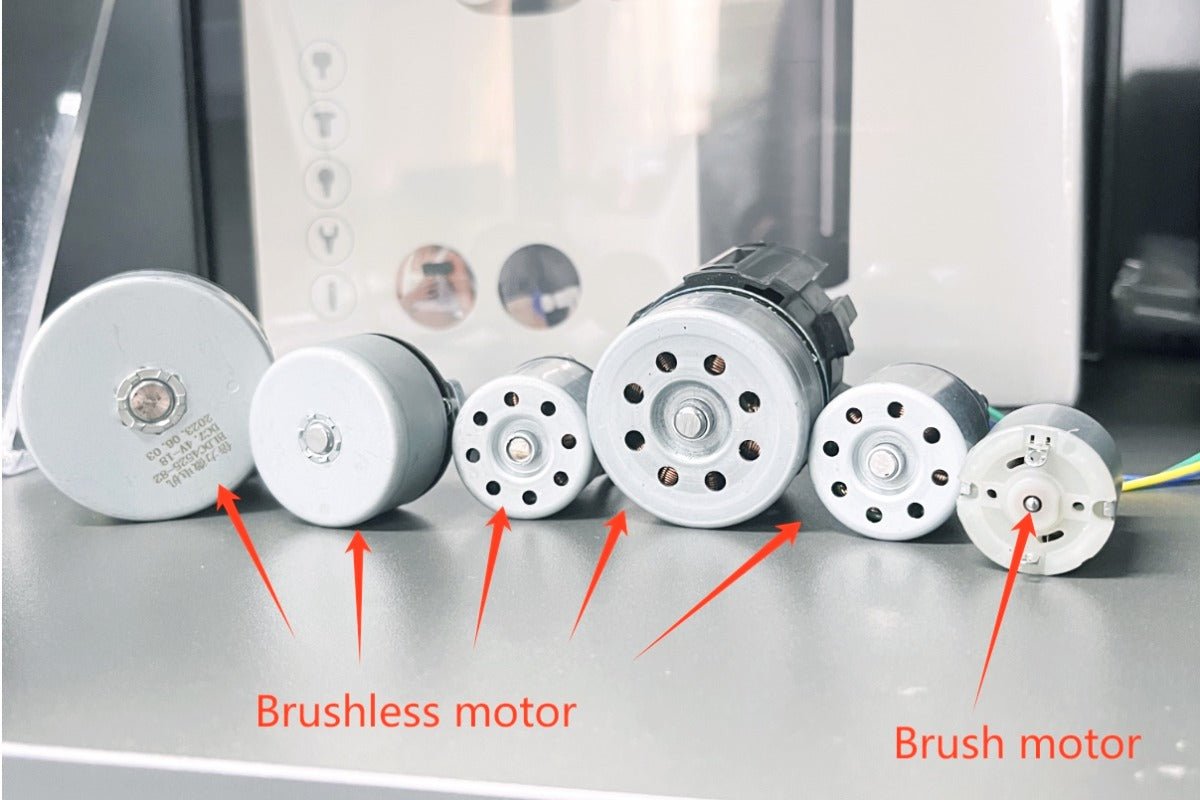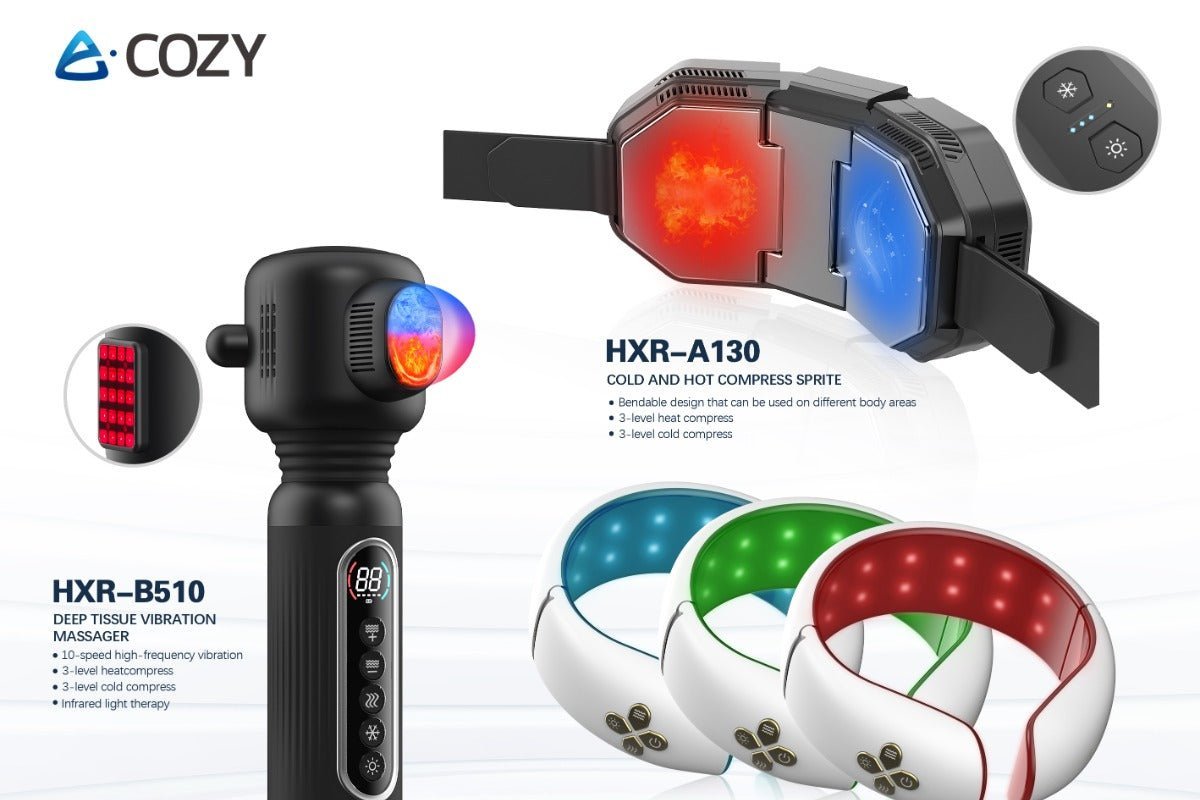What is Brushless VS Brushed Motor
When you see product specs highlighting a “brushless motor”, it’s easy to assume it’s just another marketing buzzword. But the truth is, the type of motor—brushed vs brushless—defines how a product performs, how long it lasts, and even how quietly it runs.
From power tools and electric vehicles to smart wellness devices like massage guns and heating belts, motor design is the silent factor that separates budget models from professional-grade machines.
In this article, we’ll break down what a brushed motor vs brushless motor really means, how they work, and why brushless technology has become the gold standard for high-performance and health-focused products alike.

1. The Basics: How Brushed and Brushless Motors Work
Before we talk performance, let’s start with how these two types of motors actually function.
🔹 Brushed Motor
A brushed motor uses carbon brushes to deliver electrical current to a spinning commutator. It’s a simple, proven design that’s been used for decades in fans, toys, and early-generation massagers.
However, those brushes physically touch the moving parts, creating friction and heat. Over time, that contact leads to wear and tear—and eventually, a decline in performance.
Pros:
- Low manufacturing cost
- Easy to replace or repair
- Works well for basic, low-demand devices
Cons:
- Louder during operation
- Shorter lifespan due to brush wear
- Less efficient energy use
🔹 Brushless Motor
As the name suggests, brushless motors eliminate the physical brushes. Instead, they rely on electronic controllers and magnetic fields to rotate the motor.
This means smoother operation, less heat, and much longer life. You’ll now find brushless motors in everything from drones to electric cars—and increasingly in health and wellness devices that require precision and quiet operation.
Pros:
- Higher efficiency and torque
- Longer lifespan (10,000+ hours)
- Quieter and smoother
- Maintenance-free
Cons:
- Higher upfront cost
- Requires electronic control circuitry
2. Brushed vs Brushless: The Performance Comparison
 To really understand brushed motor vs brushless, you have to look beyond the wiring diagrams and into how they perform in real-world products.
To really understand brushed motor vs brushless, you have to look beyond the wiring diagrams and into how they perform in real-world products.
| Feature | Brushed Motor | Brushless Motor |
|---|---|---|
| Durability | 1,000–3,000 hours | 10,000+ hours |
| Noise Level | Moderate to loud | Whisper-quiet |
| Efficiency | Moderate | 20–30% higher |
| Maintenance | Brush replacement required | Maintenance-free |
| Power Consistency | May weaken over time | Stable and strong |
| Cost | Lower | Higher, but longer ROI |
In short, brushless motors deliver greater performance longevity, especially for devices that run frequently or under load—like massage guns, rehab tools, and smart wearables.
3. Why Brushless Technology Is the Future
The rise of brushless systems is part of a broader global trend: smarter, cleaner, and longer-lasting technology.
In the health tech industry, for example, brushless motors enable compact devices to stay cool and quiet, which is essential for comfort and reliability.
At Ecozy, our R&D team has adopted brushless motor designs across multiple categories—massage guns, EMS devices, and hot and cold therapy tools—because they align with what today’s users value most:
- Consistent power
- Energy efficiency
- Longer battery life
- Low operational noise
It’s not just an upgrade—it’s a shift toward more sustainable and reliable wellness technology.
4. When a Brushed Motor Still Makes Sense
Of course, brushed motors aren’t obsolete. For simpler or low-use applications, they can still be a practical choice.
If you’re designing or purchasing an entry-level device—like a compact travel massager or small handheld tool—a brushed motor offers a cost-effective solution without sacrificing basic performance.
That’s why some brands still offer both versions: to meet different user needs and price points.
Brushed Motor Is Ideal For:
- Low-cost, entry-level products
- Occasional use
- Users with tight budgets
Brushless Motor Is Ideal For:
- Professional or daily use
- Clinics, gyms, and wellness centers
- Customers seeking long-term durability and quiet comfort
5. What the Market Data Tells Us
Industry research shows that brushless motor adoption is growing by over 8% annually, driven by consumer demand for smarter and quieter devices.
In wellness and recovery sectors, global brands—like Hyperice, Therabody,—are transitioning to brushless technology for premium models, because performance now defines brand trust.
Users are more informed than ever; they expect silent, efficient, and reliable operation. And brushless motors deliver exactly that.
6. The Bottom Line: Brushed vs Brushless Comes Down to Priorities
If you’re wondering which is better—brushed or brushless? The answer depends on your priorities:
If cost is the deciding factor, a brushed motor can still serve you well for basic, short-term needs.
But if you care about quiet performance, long evity, and consistent power, brushless is the smarter long-term investment.
At Ecozy, we believe technology should enhance wellness—not interrupt it. That’s why our team continues to innovate with brushless systems that deliver efficiency, reliability, and next-level comfort in every session.
Whether you’re building tools, designing wellness equipment, or choosing your next device—understanding brushed motor vs brushless helps you choose technology that truly fits your lifestyle and standards.
⚡ Quick FAQ
Q: Is a brushless motor better than a brushed motor?
Yes. Brushless motors are more efficient, durable, and quiet—ideal for modern applications.
Q: Why are brushless devices more expensive?
They use advanced electronic control systems and higher-quality components, but last much longer.
Q: Are brushed motors outdated?
Not entirely. They still work well for low-cost, low-frequency devices.
Q: What industries benefit most from brushless motors?
Health tech, automotive, robotics, and smart appliances—where precision and reliability matter most.



